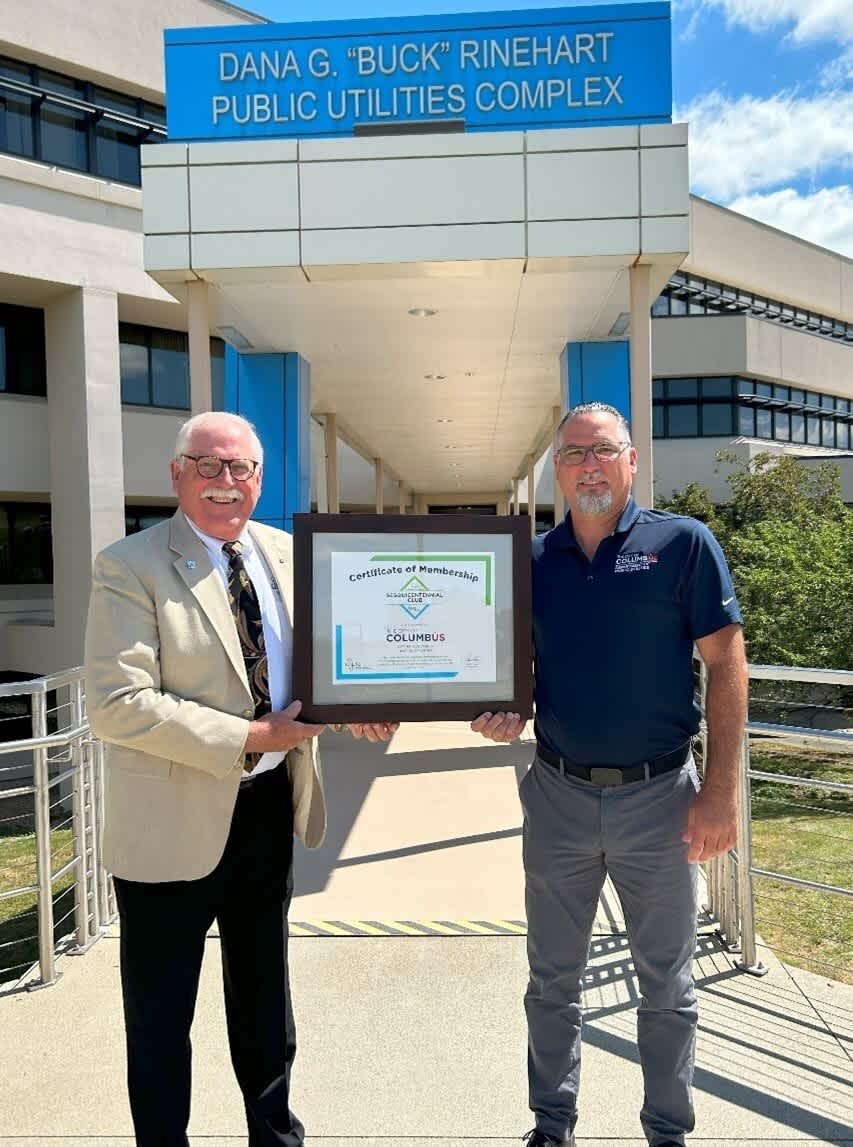
2025 Will Be Another Great Year for Ductile Iron, Questions Remain for PVC Pipes
Feb 3, 2025
"As we look ahead to 2025, we know that the Ductile iron pipe industry remains well-positioned to continue delivering clean, safe drinking water to thousands of communities in the United States."
As we look ahead to 2025, we know that the Ductile iron pipe industry remains well-positioned to continue delivering clean, safe drinking water to thousands of communities in the United States. Ductile iron remains the strongest, most resilient pipe available, and we’re seeing more and more water utilities and municipalities turn to Ductile after realizing that these pipes are the best material to serve their customers and residents for generations.
We will never be complacent, though, because we understand that innovation is at the heart of our success. Ductile iron is the descendant of cast iron, which is known to safely serve in some water systems in . We know the value of our pipes, and we will continue promoting the hard work of DIPRA’s Regional Engineers and highlighting the tremendous work being done by our member-companies.
As we plan for another excellent year in our industry, there are also a number of challenges facing the broader water industry. For example, manufacturers of plastic piping materials continue finding themselves under attack as more and more people learn about the hazards presented by plastics generally and PVC drinking water pipes specifically. The primary ingredient in PVC pipes is a toxic chemical called vinyl chloride. The scientific and environmental communities have been concerned about vinyl chloride for decades; the federal government has labeled it a “chemical of concern” and banned its use in certain consumer products. In December 2024, the U. S. EPA designated vinyl chloride a “high-priority substance” and opened a formal review of it to determine its risk level to human and environmental health.
U.S. EPA Review of Vinyl Chloride
This review under the Toxic Substances Control Act (TSCA) is critical to helping us understand how dangerous this chemical is to our daily lives. We’re surrounded by plastic, and the continued use of PVC in things like drinking water pipes, especially when there are safer and proven alternatives, just doesn’t make sense.
The tragic events in East Palestine, OH, with the Norfolk-Southern train derailment in February 2023 were a terrifying reminder of how dangerous vinyl chloride is. What’s even more frightening is that no one really knows the long-term health effects to the first responders who responded to the accident or to the residents in the community that faced the cloud of vinyl chloride, since no one had experienced that level of exposure before.
The TSCA process has several opportunities for the public to comment, and over the course of the entire review more than have been submitted asking the agency to end vinyl chloride’s use. This is an important public health discussion that is worth having and we encourage you to filed in the docket yourself.
Contaminated PVC Pipes from Wildfires
Wildfires are getting bigger, faster, and more threatening. Chico State University about the scourge of megafires, which quickly grow to burn more than 100,000 acres. These fires threaten more than residential and other structures, though.
In 2018, residents of Paradise, CA, to learn that the melted PVC pipes in their drinking water distribution system could be the source of contamination after a massive wildfire that razed the town. Similarly, in the City of Santa Rosa, California, the residents of the Fountaingrove neighborhood that ran close to $50 million for just their water system after a number of water tests confirmed benzene had contaminated their system following the devastating October 2017 Tubbs wildfire. by the City pointed to damaged plastic pipes, including PVC, as a potential source for the benzene contamination in the water that could not be removed through flushing of the system alone. That’s one of the reasons we’re keeping a close eye on the ongoing fires in Southern California since many of the same fears about melted plastic pipes , too.
The Threat of Microplastics
Do an internet search for “microplastics” and “human health,” and the results may have you thinking wistfully for the days before plastic was developed. In 2019, the World Wildlife Fund a report titled, “No Plastic in Nature: Assessing Plastic Ingestion from Nature to People,” which found that, “The largest source of plastic ingestion is drinking water with plastic found in water (groundwater, surface water, tap water and bottled water) all over the world.”
There is a growing body of scientific research indicating that microplastics are everywhere and they are unfortunately likely interacting with us through our drinking water systems.
in the International Journal of Hygiene and Environmental Health, found that both microplastics (MPs) and nanoplastics (NPs) could be found in drinking water systems, and that they were likely released as a result of degrading polyethylene (PE) and polyvinyl chloride (PVC) transmission pipes. In particular, the study found that these pipes broke down and showed wear patterns with “peeling and detachment of the polymeric material” that formed the nano-plastics that were released into the water system that carried a potential health risk to consumers.
An , entitled, The Potential Effects of Microplastics on Human Health: What is Known and What is Unknown and published by the Royal Swedish Academy of Sciences in 2021, found that “Polyvinyl chloride (PVC) has a carcinogenic monomer and several hazardous additives making it arguably the most dangerous plastic in terms of toxicity” and pointedly called for more rigorous clinical studies to explore the potential health implications of microplastics, including those released by PVC.
This is concerning because, as the Association of American Medical Colleges in June 2024, there are significant questions on the unknowns of microplastics in human bodies:
“Now, researchers are finding them in almost every part of the human body, including in breast milk, the placenta, testicles, hearts, livers, and kidneys.
“Despite these findings, experts say that little is known and understood about what impact these microplastics have on human health. A few studies have drawn associations between microplastics and poor health outcomes, including cardiovascular disease and low male fertility. And chemicals often found in plastics are known to cause a variety of health problems, including cancers, metabolic disorders, attention deficit/hyperactivity disorder, and fertility issues.”
All of these studies are in part a reason why an increasing number of people are trying to limit their exposure to plastic by eliminating what they can from their lives. Imagine the reaction, then, when people learn that the pipes conveying their drinking water could be made of PVC and other potentially problematic plastics that could seemingly be causing problems in the first place.
The DIPRA team, and our member companies are all readily available to serve as resources for water utilities concerned about the potential impacts of the vinyl chloride review by the EPA or by the emerging concerns that may arise from microplastics in water systems. DIPRA’s regional engineers are here to provide support for making informed decisions and ensuring safe drinking water for your communities. We look forward to working with you this year!

David Cole
Ductile Iron Pipe Research Association President





